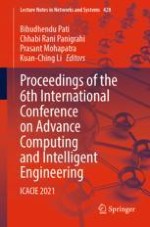2023 | OriginalPaper | Buchkapitel
Role of Machine Learning Approaches in Predicting COVID-19 New Active Cases Using Multiple Models
verfasst von : Ritesh Kumar Sinha, Sukant Kishoro Bisoy, Bibudhendu Pati, Rasmi Ranjan Khansama, Chhabi Rani Panigrahi, Saurabh Kumar
Erschienen in: Proceedings of the 6th International Conference on Advance Computing and Intelligent Engineering
Verlag: Springer Nature Singapore
Aktivieren Sie unsere intelligente Suche, um passende Fachinhalte oder Patente zu finden.
Wählen Sie Textabschnitte aus um mit Künstlicher Intelligenz passenden Patente zu finden. powered by
Markieren Sie Textabschnitte, um KI-gestützt weitere passende Inhalte zu finden. powered by
